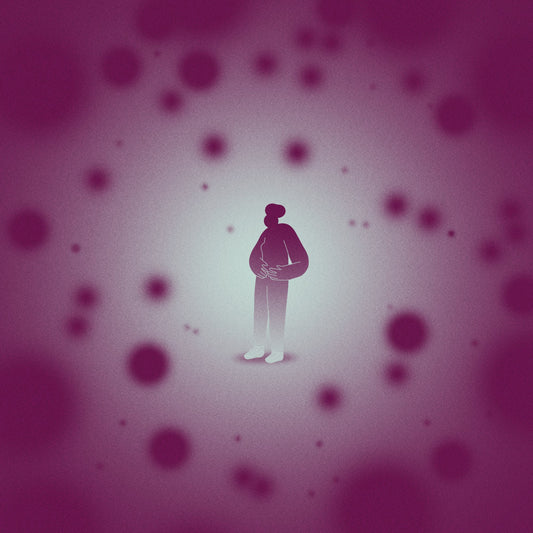You get aroused, you get sexually excited – and if things go according to plan, you consummate the experience with a satisfying orgasm.
As the late, great Mitch Hedberg might say: we don’t have to bring psychologists and sexologists into this.
Even so, it’s the responsibility of science to observe and understand physical (and in this case, mental) facts and events. So there’s been an inordinate amount of research into the way the body and the brain respond to sexual stimuli.
Psychiatrists have long been fascinated with the issue. Freud’s theory of sexual drives (which views sex in terms of the libido, the superego and the id) dominated discussion of human sexual behavior for many decades.
But the way experts viewed sexual behavior changed drastically in 1966, when the sex research team of William Masters and Virginia Johnson released their blockbuster book, Human Sexual Response.
The Importance of Masters and Johnson’s Work
Masters and Johnson set out to better understand the physiology of human sexuality, and the key to their work was the depth of their research.
They didn’t simply rely on anecdotal patient interviews, as did Alfred Kinsey when he released his supposedly-seminal Kinsey Reports on “male and female sexual behavior.”
Instead, Masters and Johnson observed first-hand as nearly 700 people experienced what they claimed were “10,000 complete cycles” of sexual arousal and response – complete with laboratory data. And yes, that means they watched and measured physical responses during subjects’ masturbation, or while they were having sex (supposedly with paper bags over their heads to preserve their anonymity).
Masters and Johnson reported a number of landmark findings. Among them:
- The physiology of vulva-havers’ orgasms was the same, whether it was produced by clitoral or vaginal stimulation.
- Older people are fully capable of sexual excitement and orgasm, despite physical changes that might change their specific responses.
- Vaginal lubrication is produced by glands adjacent to the vagina, not by the cervix.
- Vulva-havers can be multi-orgasmic, while penis-havers must experience a “refractory period” after climax.
- Sexual dysfunctions and related sexual problems can often be quickly and effectively treated.
Most important, however, was the Masters and Johnson theory of human sexual response, which they called the “sexual response cycle.” There have been some criticisms, and some alternate versions have been proposed, but the basics of their theory remain a cornerstone of 21st century sexual science.
The Human Sexual Response Cycle
Masters and Johnson reported that their findings showed men’s and women’s sexual responses – those are the terms they used, which were certainly common in the 1960s – to be nearly identical. (That’s one of the major conclusions that some experts have challenged in recent years.)
They described those sexual responses as occurring in four sequential phases.
The Excitement Phase
This initial phase is sometimes called the arousal phase, for obvious reasons. During the excitement phase, sexual desire and arousal occur due to physical, mental or sexual stimulation (or any combination of them), while the body prepares itself for the possibility of penetrative sex. This phase can last anywhere from a few minutes to a few hours, and can involve physical contact, visual stimulation or fantasy.
The excitement phase is characterized by a number of physical responses.
- An increase in muscle tension.
- Flushed skin or red skin blotches may appear, particularly in vulva-havers.
- An increase in heart rate and blood pressure, and faster breathing.
- Nipples become hard or erect.
- Increased blood flow to the genital area, leading to erection or swelling of the clitoris and labia minora (the inside lips).
- In penis-havers, the scrotum becomes tighter, the testicles swell, and a lubricating liquid is secreted.
- In vulva-havers, breasts and vaginal walls begin to swell and vaginal lubrication begins.
The Plateau Phase
This phase generally occurs begins after the excitement phase, although excitement and plateau often overlap. It lasts until the body is at the edge of climax.
- Most of the physical responses experienced during excitement continue and become more intense.
- In vulva-havers, the clitoris becomes extremely sensitive, possibly even painful to touch, and often retracts under the clitoral hood; the vaginal walls continue to swell and darken in color.
- In penis-havers, the penis is fully swollen, and the testes tighten and are pulled into the scrotum.
- Muscle tense even more, and muscle spasms begin in the face, hands and feet.
The Orgasm Phase
This is the phase that you might think requires very little research to understand. However, there are a lot of physiological responses during climax. And since it lasts only seconds, many of those responses might go unnoticed without Masters and Johnson’s more rigorous observations.
- Heart rate, blood pressure and breathing are all at their highest levels.
- Involuntary muscle contractions begin and build quickly. Some muscles spasm, particularly in the feet.
- In penis-havers, rhythmic contractions in muscles at the base of the penis force ejaculation of semen.
- In vulva-havers, vaginal muscles and the uterus contract rhythmically.
- There is a forceful and sudden release of sexual tension, along with ejaculation in penis-havers, probably the reaction that most people associate with the orgasmic phase.
- Flushing or skin rashes may appear. (Masters and Johnson called this a “sex flush.)
The Resolution Phase
Cynics might say that during this phase, penis-havers are likely to roll over and go to sleep while vulva-havers are either anxious for intimacy or ready to “go again.” We mentioned the reason for different reactions earlier; it’s because those with penises generally need time to recover after orgasm. Masters and Johnson called this the refractory period and its length varies from person to person, often lasting longer as penis-havers age.
Characteristics of the resolution phase:
- Swelled and/or erect body parts return to their original color and size. Muscle tension eases.
- Heart rate, blood pressure and breathing return to normal.
- An overall feeling of well-being, fatigue, and – hopefully – intimacy sets in due to release of the “love hormone” oxytocin.
Masters and Johnson’s Human Sexual Response (and their follow-up, Human Sexual Inadequacy) were each best-sellers. And their description of the sexual response cycle is still taught today as an integral component of sexual health and wellness.
That doesn’t mean it was the definitive word on the subject.
Alternate Models of Sexual Response
Sex therapist Helen Singer Kaplan, who had founded the nation’s first clinic for sexual disorders, was the first to take a stab at modifying the Masters and Johnson model, in 1979. But her “triphasic concept” wasn’t all that different. It only proposed three stages; desire, excitement, and orgasm were similar to the stages in the sexual response cycle, but the definition of the desire stage was simply expanded.
The first real alternative theory was developed by noted sexologist Beverly Whipple and Karen Brash-McGreer. Their “circular model” was specific to vulva-havers, and suggested that desire was predicated on previous sexual experiences. In brief, if a vulva owner had an experience that led to sexual pleasure, that would increase their desire for sex. If it wasn’t enjoyable, their overall level of desire was lessened.
Around this time, many experts were criticizing these attempts to explain the physiological and psychological effects associated with sexual activity. Their primary complaint was that the four stages of sexual response (or Kaplan’s three stages) were somewhat simplistic, because ithey all presupposed a linear relationship between sexual desire, arousal and orgasm. Critics said that the models described sexual response in penis-havers pretty accurately, but missed a great deal when it came to those with vulvas.
The model that emerged from that criticism was sexual medicine professor Dr. Rosemary Basson’s 2001 “non-linear model” of sexual response, again predicated primarily on the experience of vulva-havers.
Basson’s model suggests, above all else, that sexual experiences for both vulva and penis owners (but particularly those with vulvas), are much more complicated than Masters and Johnson believed. She says that the phases in the sexual response cycle can be intertwined, and don’t necessarily occur in a 1-2-3-4 order.
Some of the key theories in Basson’s model:
- Desire can be spontaneous as well as responsive to external or internal stimuli.
- Desire can occur before or after arousal.
- Relationship factors can play an important role in both desire and arousal, as emotional intimacy often factors into the response cycle in important ways.
- Orgasm isn’t necessary for sexual satisfaction.
Finally, Basson says that the cycle doesn’t have to begin with sexual excitement – people can “enter” the cycle at any stage.
None of these alternative models have been fully accepted by the medical, psychiatric or sexual health communities. In fact, the authoritative DSM-5 manual used by mental health professionals still uses the Masters and Johnson sexual response cycle as its basis for defining and diagnosing sexual dysfunctions.
However, more and more experts combine the Masters and Johnson research with later theories on sexual response, in order to discuss the subject or treat their patients – while they wait for the “next step” in this debate.


















































